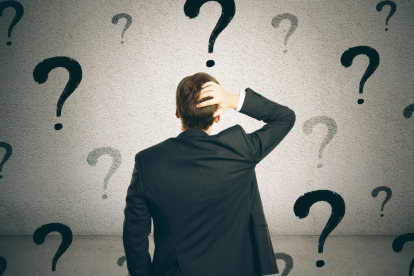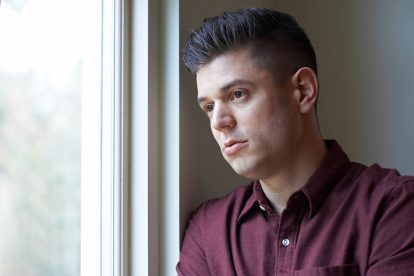
Bipolar Disorder Symptoms and Signs
Bipolar disorder symptoms cover a broad spectrum, ranging from depression to mania. The disorder is diagnosed based on these symptoms, and when they are observed medical attention should be sought immediately. Once the disorder is recognized, mental health professionals will craft a comprehensive treatment program to address all its symptoms, and for most bipolar patients their long-term prognosis is excellent.
The Facts about Bipolar Disorder
Bipolar disorder was once considered a rare condition. But with more awareness and better diagnostic techniques, it is now clear this assumption was false. Mood disorders affect approximately 20 million people in the United States, and while major depression is the most common type, bipolar disorder affects more than one quarter of this group, or 2.6 percent of the adult population. In total as many as six million American adults may suffer from bipolar disorder, and there may be several hundred thousand teens and children experiencing life-altering bipolar symptoms as well.
Women with bipolar disorder are diagnosed at a slightly higher rate than men. Bipolar disorder symptoms are essentially the same in men and women, but in general women experience longer-lasting depressive episodes.
While bipolar depression and mania can manifest in a wide range of intensities, 83 percent of those diagnosed with the disorder experience severe symptoms part or most of the time. The average age of onset is 25, and the majority of bipolar sufferers will be diagnosed between the ages of 15 and 30.
There is no bipolar test that can allow for quick and easy diagnosis. But bipolar disorder symptoms are the key to its identification, and given enough time and information mental health professionals are able to detect the disorder’s presence.
Depression: Early Warning Signs of Bipolar Disorder
Depression is the most frequently experienced mood in bipolar disorder sufferers. In its most severe form bipolar depression is indistinguishable from clinical depression, which can confuse doctors tasked with making a diagnosis.
When depression first develops, those who are unfamiliar with it will not understand what is happening. They will know they feel different, but they will likely blame external circumstances for their emotions—or lack thereof—rather than a medical condition. But bipolar depression is a legitimate disorder and is largely disconnected from outside events.
The earliest signs of depression in bipolar sufferers include:
- Loss of motivation to perform simple tasks
- A pessimistic attitude and demeanor
- An inability to initiate or complete projects
- Changes in appetite and eating habits
- Social withdrawal and a sudden preference for solitude
- A loss of interest in activities they previously enjoyed
- Chronic fatigue and lack of energy
- Difficulty concentrating or remembering
- Talking about suicide
Each of these depression symptoms is an indication of distress, and all are likely to worsen as the depressive state unfolds. But talk of suicide is especially concerning and a sign that medical intervention is urgently needed.
With just these symptoms major depression may be suspected, so if any manic symptoms have been previously experienced they should be reported to the mental health professional responsible for providing treatment. This will reduce the chances of a misdiagnosis.
Mania: Early Warning Signs of Bipolar Disorder
Any accurate bipolar definition must acknowledge both the mania and the depression associated with the disease, since each will manifest in some form. Episodes of one may not follow the other in rapid succession, but if an individual with bipolar disorder has recovered from a bout of depression, the signs of bipolar mania are bound to appear eventually.
When a bipolar manic state is developing, it can be recognized by these early warning signs:
- Exuberance and euphoria that seem disconnected from real-world events
- Rapid-fire speech with a stream-of-consciousness aspect
- Restlessness and agitation
- Irritability
- Supreme self-confidence and boastfulness
- An inability to focus on anything for more than a few minutes
- Exaggerated emotional responses
- Decreased need for sleep
- Hallucinations or delusions
- Risky, impulsive, or even dangerous behavior
While mania is not usually as disabling as bipolar depression, in at least one form of the disorder (bipolar I) manic states can become so intense that they may require hospitalization.
A less severe variety of mania known as hypomania is experienced by those who suffer from bipolar disorder II or cyclothymic disorder, two other categories of the illness. With hypomania some of the above symptoms will still be experienced, but in a more subdued and less disruptive form.
Mixed Episodes
The standard bipolar definition describes depressive and manic states that occur separately and in a cyclical fashion. But on occasion, individuals diagnosed with bipolar disorder will experience mixed episodes that feature elements of both depression and mania.
A person with bipolar disorder can have a manic/hypomanic episode with mixed features, or a depressive episode with mixed features. For the former to be diagnosed, three bipolar depression symptoms must be experienced simultaneously with the mania or hypomania, while the latter requires three symptoms of mania or hypomania to manifest during the depression.
Some bipolar disorder sufferers have regular mixed episodes, while for others it may be a rare occurrence. But mixed episodes only add to the confusion and uncertainty people with bipolar disorder feel, especially if they have yet to receive an actual diagnosis.
Bipolar Disorder in Children and Teens
Bipolar is an adult disorder for the most part. But children and teens do experience bipolar symptoms, and more young people are being diagnosed with the condition than ever before.
Teens show signs of bipolar disorder more frequently than children, and it is suspected that many people diagnosed with bipolar in their twenties actually experienced their initial symptoms during adolescence.
There are no major differences between bipolar disorder symptoms in adolescents and adults. As an added complication, both groups are vulnerable to substance abuse and may choose to self-medicate if their symptoms aren’t recognized and they don’t get the help they need.
The situation is somewhat different when children develop bipolar disorder. The usual signs of depression in kids are not as prevalent, and compared to adults they are more likely to show signs of irritation or outward distress when depressive states first start to develop. They are also more likely to complain of physical aches and pains when experiencing the symptoms of depression, although such complications do occur in bipolar depression sufferers of all ages.
Mania in children doesn’t have the same edge as it does in older sufferers. Their manic symptoms frequently manifest as silliness or goofiness, and this combined with an inability to concentrate or sit still often leads to a misdiagnosis of ADHD.
Unfortunately, drugs given to children for ADHD can stimulate more severe manic symptoms, fueling the fire they were prescribed to put out. Hallucinations seem to be more common in kids undergoing manic states than they are in adults, but they may be harder to recognize since children are expected to have strong imaginations.
One major difference between kids and adults with bipolar is the speed of the cycles. Older bipolar disorder sufferers experience episodes of depression or mania that often persist for weeks or months, while children with the disorder may switch from depression to mania and back again over a period of several days—or even in a single day.
In addition to bipolar disorder, there is another condition called disruptive mood dysregulation disorder (DMDD) that can cause irritability and emotional volatility in children. The similarity between these two mood disorders can make diagnosing one or the other difficult, but there is no doubt that kids can and do experience bipolar disorder symptoms on at least some occasions (although much more rarely than adults).
Begin Your Recovery Journey Today.
619-466-0547Treatment and Recovery
The lack of a definitive bipolar test means mental health professionals must rely on symptom reports to make an accurate diagnosis. Unfortunately, studies indicate that up to 70 percent of bipolar sufferers are misdiagnosed at least once, which reveals how complex and contradictory bipolar symptoms can be.
There is symptomatic overlap between bipolar disorder depression, mania, and a number of other mental and behavioral health conditions, including:
- Major depression (the leading misdiagnosed condition)
- Anxiety disorders
- ADHD (adult and childhood)
- Borderline personality disorder
- Schizophrenia
- Substance abuse (i.e., addiction to stimulants like methamphetamine or cocaine)
Substance abuse can be an especially confounding factor, since up to half of all bipolar sufferers have co-occurring chemical dependency issues and they often use drugs and alcohol to mask their symptoms.
Eventually (sooner rather than later in the best-case scenario), the symptoms of bipolar disorder will become self-evident, and at that point a comprehensive treatment program will be created to help the bipolar sufferer manage the mania, the depression, and the various life complications they cause.
Treatment will include some combination of bipolar medications, usually mood stabilizers, antidepressants, and antipsychotics, along with psychotherapy (individual, group and family), education and life skills classes, and complementary mind-body healing methods if the patient is so inclined.
Children and teens will be enrolled in a somewhat scaled-down version of this program, but like adults they must receive medical attention if they are to recover from their illness.
For most adult bipolar sufferers, a period of mental health rehabilitation in a residential treatment center can he highly beneficial. In this 24-hour, care-focused environment, the individual with bipolar disorder will be able to focus completely on their health and recovery, building better coping skills that will serve them well once they return home to their families and to their ongoing outpatient treatment plans.
If a person with bipolar disorder has a dual diagnosis for substance abuse, integrated treatment services that address both conditions are absolutely vital to their long-term wellness.
Bipolar disorder symptoms are consistent with a significant mental illness. Thankfully, the prognosis for most bipolar sufferers who receive treatment is excellent, and a patient, dedicated approach to recovery can yield immense rewards in the long run.



